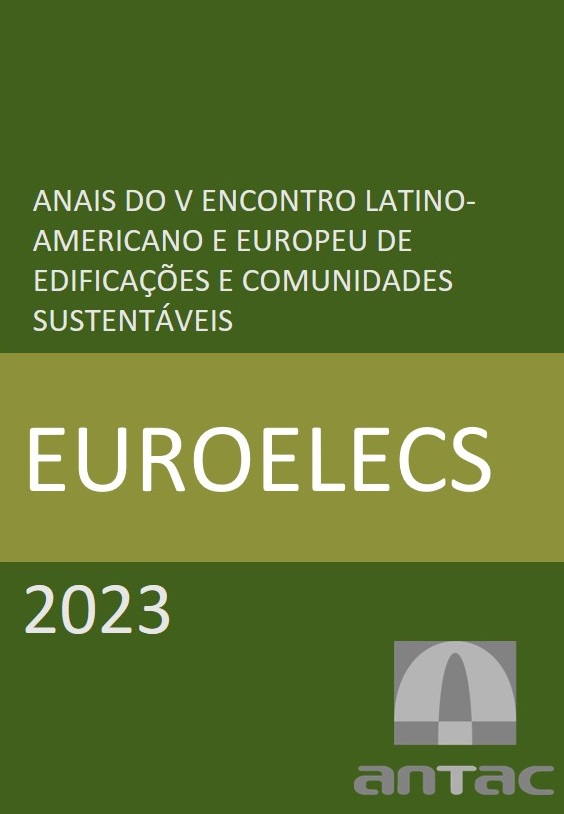Walkable Bangu
The Walkability Index as a design methodology
Keywords:
Bangu, Walkability Index, Active mobility, Sustainable city, suburb of Rio de JaneiroAbstract
Bangu, a neighborhood in the West Zone of Rio de Janeiro, is marked by the presence of the railway, which despite contributing to mobility in the city's escalation, divides the neighborhood, creating spaces accessible to pedestrians. Even though suburban neighborhoods developed as a result of the railway, the evidence of the automobile in urban planning is present in these places, or can be seen through the presence of narrow sidewalks and wide roads, helping to keep people away from public spaces. Short routes that could be done on foot are made difficult due to issues of safety, accessibility and even the lack of environmental comfort. The work criticizes the city model that prioritizes cars over people, and proposes the requalification and transformation of the central area of Bangu, to make it a walkable neighborhood. To guide the design process, the Walkability Index was used.
(ICam), developed by ITDP Brasil. It is also proposed to adapt the existing ICam with the inclusion of sustainability and urban resilience indicators, creating a Green Walkability Index. It was possible to perceive that the use of ICam as a methodology for analyzing urban space contributed to the perception of the biophysical and urban aspects of the place, facilitating the recognition of the problems of the territory and the development of an urban project that favors active mobility and the readjustment of city from a pedestrian perspective. The incorporation of new indicators into ICam was important, as in addition to complementing existing functionalities, it highlights the need to transform cities based on principles of environmental sustainability and resilience. Even so, the recognition of urban patterns and the creation of street typologies allowed the creation of a walkable neighborhood model that was adaptable in the context of Rio's suburbs and that could be used as a basis for other projects in the region.
References
ABBUD, Benedito (2006). Criando paisagens: Guia de Arquitetura paisagística. 4a ed. São Paulo: Senac.
GAETE, Constanza (2016). 5 fatores que tornam os bairros caminháveis. Archdaily. Disponível em: <https://www.archdaily.com.br/br/801403/5-fatores-que-tornam-os-bairros-caminhaveis?ad_medium=mobile-widget&ad_name=recommendation>. Acesso: 20/06/2023.
GEHL, Jan; GEMZØE, Lars; KARNAES, Sai. (2006). New City Life. Arkitektens Forlag.
INSTITUTO, Municipal de Urbanismo Pereira Passos (IPP). Anexo VI – Descrição e Mapas da Área de Planejamento. Rio de Janeiro. Disponível em: <http://www.rio.rj.gov.br/dlstatic/10112/4290214/4105682/06.AnexoVIDescricaoeMapadaAreadePlanejamento5>. Acesso: 20/06/2023.
ITDP Brasil (2017). Guia de Planejamento Cicloinclusivo do ITDP Brasil.
ITDP Brasil (2018). Índice de Caminhabilidade: Ferramenta.
JACOBS, Jane (2011). Morte e vida de grandes cidades. 3a ed. São Paulo: Editora WMF Martins Fontes.
LINKE, Clarisse Cunha (2016). Índice de caminhabilidade permite avaliar ruas sob a ótima do pedestre. Archdaily. Disponível em: <https://www.archdaily.com.br/br/794537/indice-de-caminhabilidade-permite-avaliar-ruas-sob-otica-do-pedestre>. Acesso: 20/06/2023.
RODRIGUES, Diego (2021). Urbanização e mudanças climáticas. Observatório de impactos. Disponível em: <https://observatoriodeimpactos.blog/2011/04/07/urbanizacao-e-mudancas-climaticas/>. Acesso: 20/06/2023.
SÁ, Cristiane (2014). Bangu a identidade perdida? – memórias, heranças, valores e mudanças. Especialização em Política e Planejamento Urbano do Instituto de Pesquisa e Planejamento Urbano e Regional – IPPUR, UFRJ. Brasil.
SOUSA, Priscila; ALMEIDA, Ursula; ALIPRANDI, Danielly (2018). A conquista de uma cidade caminhável: estudo comparativo na cidade de campos dos goytacazes/rj. 8 o congresso luso-brasileiro para o planeamento urbano, regional, integrado e sustentável. Cidades e territórios - Desenvolvimento, atratividade e novos desafios. Coimbra, Portugal.
SPECK, Jeff (2017). 4 ways to make a city more walkable. Palestra proferida no TED x MidAtlantic. Disponível em: <https://www.youtube.com/watch?v=6cL5Nud8d7w&t=5s>. Acesso: 20/06/2023.

